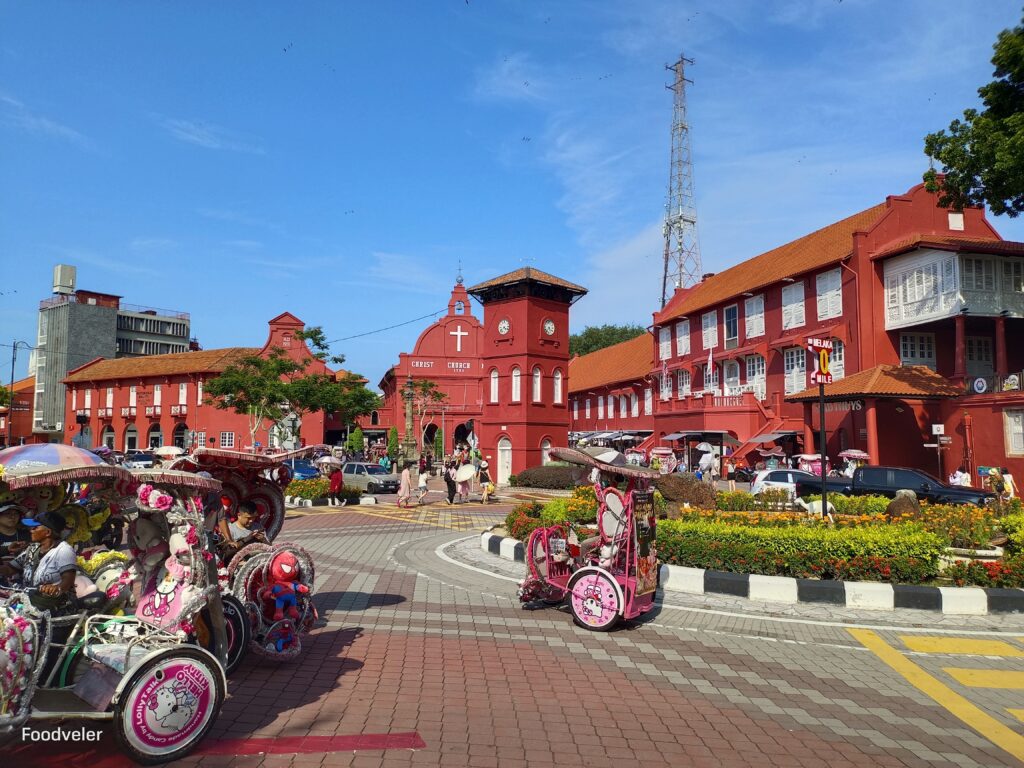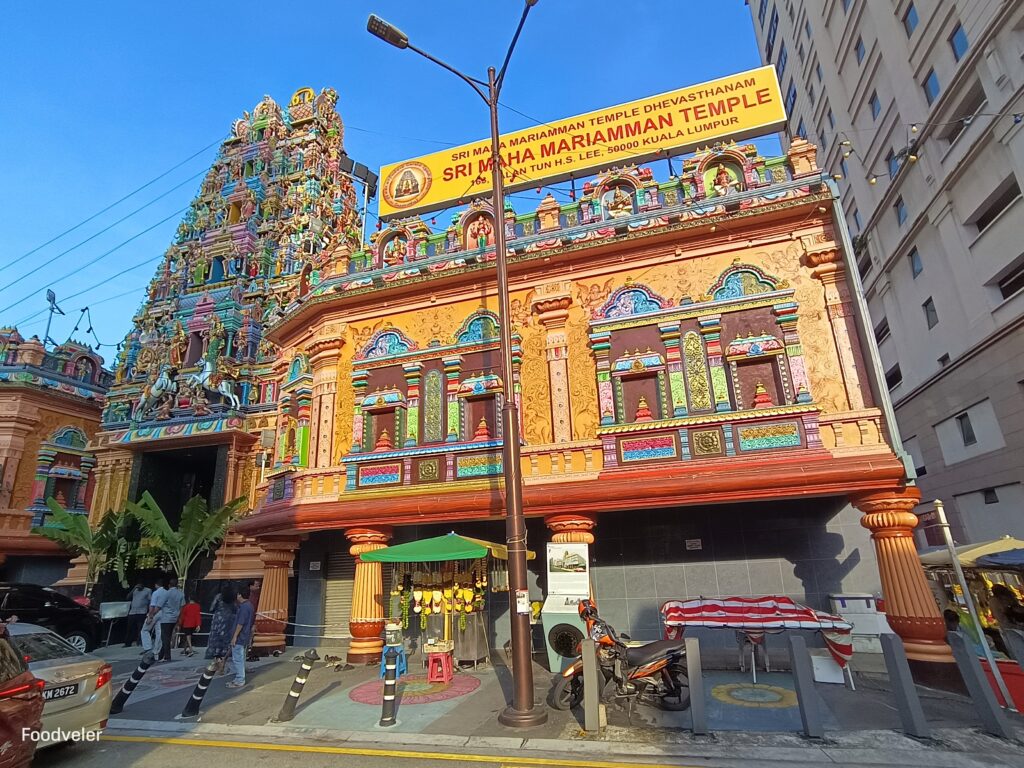Special thanks to Asia Camera Museum for extending this attraction invitation.
Besides the Camera Museum at Muntri Street (Lebuh Muntri), George Town has another camera-themed attraction: Asia Camera Museum. This museum occupies the upper floor of a mansion at the intersection between Burmah Road (Jalan Burma) and Transfer Road (Jalan Transfer).
Asia Camera Museum is founded by four camera enthusiasts, who opened this museum out of their passion for photography. The main objectives of Asia Camera Museum are to pay tribute to professionals in photography (especially during the pre-digital era), and to educate the public on the history of photography.
There are over 300 cameras on exhibit at Asia Camera Museum; more than 1,000 pieces if accessories are included. Many of these cameras are the founders’ personal collection over the years. Most cameras have been restored so that they are still functioning properly. It seems cameras were built to last back then.
In addition to cameras displayed in glass exhibits, Asia Camera Museum also allows visitors to handle several of them with bare hands. This hands-on experience helps visitors to appreciate the functionality and limitations of cameras before the digital age.
Here is a brief historical background of photography. The oldest surviving photograph in history is the view from the window at Le Gras. This photograph was taken using a camera obscura between 1826 and 1827 by Nicéphore Niépce (1765-1833) in Saint-Loup-de-Varennes, France. Back then, photosensitive materials were still in the infancy stage, so this photograph required several hours of exposure to produce.
The earliest photograph with unmistakable image of people is of the Boulevard du Temple (1838). This image was taken by French photographer Louis Daguerre (1787-1851), who is often credited for revolutionizing photography. Photosensitive material used to produce this image required 10 minutes of exposure, so images of pedestrians were not captured. However, this famous photograph managed to capture a still image of a man polishing his boots. This unidentified chap unintentionally became the first person ever to be photographed.
While the earliest cameras use a single pin hole to focus light, people started to use lenses to produce sharper images. However, the earliest lenses still had considerably weak diopter magnification, so camera manufacturers invented retractable lenses to save space when carrying these bulky cameras.
A viewfinder helps the photographer to aim the camera before a shot is taken. In the early days, the lenses for the viewfinder and the actual camera were separated to avoid the effects of optical aberration. The drawback is that the viewfinder and captured image were slightly offset from each other.
In terms of lighting, flash-lamps were used to illuminate the subject. Combustible chemicals like magnesium and potassium chlorate were used, but accidents can result in injury or death. In the 1920s, safer flashbulbs started to gain popularity. However, these flashbulbs still need to be replaced after each use. Therefore, photographers had to carry a considerable supply wherever they went.
Electronic flash eventually superseded flashbulbs. Using electronic circuitry, a capacitor is charged to several hundred volts, then is discharged quickly through a flash tube. Light generated is so glaring that the subject’s eyesight is temporarily blinded. This is why celebrities had to wear sunglasses when they posed for paparazzi. The tradition continued to this day, but sunglasses are now meant to look cool rather than anything else.
Some of the best camera manufacturers in the early days were from Germany. In fact, German cameras became the yardstick for camera quality – so much that Soviet manufacturers began to make exact duplicates of German designs!
Japanese camera manufacturers were also quick to join the bandwagon. Companies like Canon, Nikon and Yashica began to introduce single-lens reflex (SLR) cameras in the 1950s. Later designs also had interchangeable lenses.
Few camera manufacturers survived to this day, but Canon is one which successfully transitioned to the age of digital photography.
Video camera also experienced rapid advancement on its own. One engineering breakthrough is the development of self-loaded film tape. A spring needs to be tightened beforehand, then a single press of button releases the spring, which loads the film tape frames sequentially into the camera. This allows the camera to capture successive images for extended period of time.
The ability to reproduce video images is as important as the ability to capture them. One significant development in film projection is the Latham Loop, named after Woodville Latham (1837-1911) who financed the invention. Inventor credit is often given to his employees William Kennedy Laurie Dickson (1860-1953) and Eugene Augustin Lauste (1857-1935).
Penang also had its fair share of photography history. One of the earliest photo studios in Penang was Siew Seong Studio (萧湘影室) at Penang Road (Jalan Penang). Opened in 1954, the studio operated for 6 decades until its closure in 2014.
To honor its long, proud history, Asia Camera Museum dedicates an exhibition hall for Siew Seong Studio where original equipment from the historical studio are restored and displayed.
Beside the exhibition hall, there is an adjoining Dark Room which depicts how photographs were developed from photosensitive films. Red lighting is used to avoid unintentional exposure. The tools and chemicals in the Dark Room are actual ones. For larger parties, the staff of Asia Camera Museum can demonstrate on how the films are being processed.
Unlike today’s cameras, the earliest cameras were quite expensive, such that camera-repairing is a viable business. An old workbench is brought back to life at Asia Camera Museum. Hardware used back then was quite simple: screwdrivers and pliers. For cameras that were damaged beyond repair, the repairman usually tried to salvage as many parts as possible, such as screws of various sizes.
I find the most impressive and educational aspect of Asia Camera Museum is the set of three fully dismantled cameras. I was not aware that a simple camera comprises of several hundred pieces of individual components! It is also evident that the advent of digital cameras did not significantly reduce the complexity of mechanical parts.
Asia Camera Museum is open daily from 11:00am to 7:00pm. Admission is charged at RM20.00 for an adult, and RM10.00 for a student. Guided tour is available even for single visitors. In addition, the museum also offers group packages such as seminars, workshops and teambuilding events.
Name: Asia Camera Museum
Address: 10, Jalan Burma, 10050 George Town, Pulau Pinang
Contact: 04-262-3191
Business hours: 11:00am-7:00pm
Website: http://www.asiacameramuseum.com
Coordinates: 5.41773 N, 100.32932 E
Directions: From Penang Road (Jalan Penang), turn to Burmah Road (Jalan Burma). Asia Camera Museum is approximately 100 meters down on your right. It is a two-floor mansion just before Transfer Road (Jalan Transfer). Parking is available within the compound of the building. The museum is on the upper floor. Enter the main entrance and take the stairs inside.



